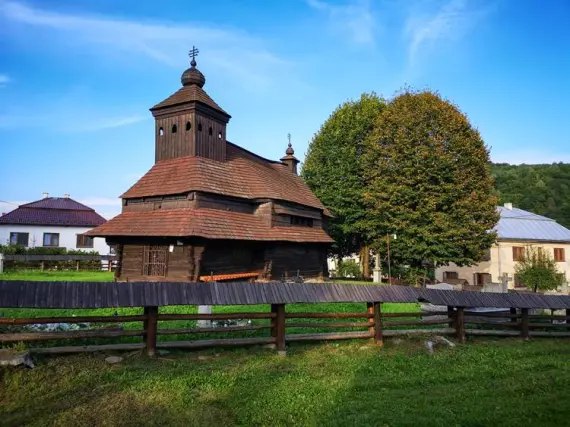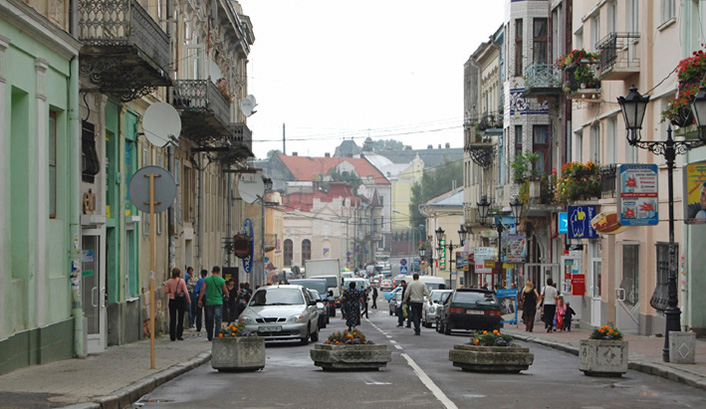Bus STALOWA WOLA - DROHOBYCH - Sindbad
STALOWA WOLA

Stalowa Wola is a city of nearly 60,000 people in Subcarpathian province. Historically, it is a very young city. It was established in 1938 as part of the Central Industrial District plan, building the Southern Works (mainly related to the engineering industry) near the village of Plawo between the towns of Nisko and Rozwadów. Before the war, some of the plants were built, as well as near-factory settlements called Stalowa Wola. Over the past several decades, Stalowa Wola has developed and the small factory settlement has grown into a medium-sized city, almost rivalling the largest in the province - Rzeszów and Przemyśl.
Stalowa Wola offers visitors many attractions. Despite its short history as a city, it has several monuments related to the Lubomirski family on its territory, and you will also find interesting modernist architecture. While in the city, it is additionally worthwhile to enjoy outdoor recreation in one of the specially arranged parks and green spaces. You can take a stroll through the well-landscaped City Park or the Zimna Woda Park and visit an interesting exhibition of paintings by the leading artist of Young Poland, Alfons Karpinski. The Museum of the Central Industrial District, with many interesting multimedia exhibitions and exhibits related to the industry, is also an interesting facility, worth a visit.
Stalowa Wola can be reached by train from many Polish cities - directly from Warsaw, Cracow or Lublin, among others. There is also a bus station in the city, which will take you to many surrounding cities and Poland's largest cities, as well as cities beyond our borders. If you are interested in Stalowa Wola - a bus or train may just be the best choice for an interesting trip.
Stalowa Wola is a city of nearly 60,000 people in Subcarpathian province. Historically, it is a very young city. It was established in 1938 as part of the Central Industrial District plan, building the Southern Works (mainly related to the engineering industry) near the village of Plawo between the towns of Nisko and Rozwadów. Before the war, some of the plants were built, as well as near-factory settlements called Stalowa Wola. Over the past several decades, Stalowa Wola has developed and the small factory settlement has grown into a medium-sized city, almost rivalling the largest in the province - Rzeszów and Przemyśl.
Stalowa Wola offers visitors many attractions. Despite its short history as a city, it has several monuments related to the Lubomirski family on its territory, and you will also find interesting modernist architecture. While in the city, it is additionally worthwhile to enjoy outdoor recreation in one of the specially arranged parks and green spaces. You can take a stroll through the well-landscaped City Park or the Zimna Woda Park and visit an interesting exhibition of paintings by the leading artist of Young Poland, Alfons Karpinski. The Museum of the Central Industrial District, with many interesting multimedia exhibitions and exhibits related to the industry, is also an interesting facility, worth a visit.
Stalowa Wola can be reached by train from many Polish cities - directly from Warsaw, Cracow or Lublin, among others. There is also a bus station in the city, which will take you to many surrounding cities and Poland's largest cities, as well as cities beyond our borders. If you are interested in Stalowa Wola - a bus or train may just be the best choice for an interesting trip.
DROHOBYCH

Drohobych (ukr. Дрогобич) is one of the oldest cities in Ukraine, located in the western part, Lviv region. The city is known for its rich history, valuable cultural heritage and industrial traditions. Drohobych is located in a picturesque region that was one of the most important economic and cultural centers in Ukraine in the Middle Ages.
Drohobych is a city that has numerous monuments and tourist attractions that are witnesses to its rich history.
1. St. Bartholomew Church - one of the city's most important monuments, which is an example of Eastern European sacred architecture. This church, built in the 15th century, is part of the UNESCO World Heritage Site. It features unique architecture, including a shingled roof, and beautiful wall paintings.
2. Drohobych Castle Ruins - although the castle is now in ruins, it is one of the city's major tourist spots. The castle was of great strategic importance in the Middle Ages, serving defensive and administrative functions.
3. Museum "Drohobych and its History" - a museum that takes a look at the history of the city, from medieval times to the present. The exposition covers various aspects of the life of the residents, including the salt mining industry and the cultural traditions of the region.
4. Synagogue - although in Drohobych, as in many other cities, the Jewish community was tragically destroyed during World War II, the remains of the synagogue are a reminder of the city's Jewish heritage.
5. Jewish Cemetery - Drohobych also has a historic Jewish cemetery that bears witness to the presence of the Jewish community in the region for centuries.
Despite not being a large city, Drohobych still plays an important cultural and tourist role in western Ukraine. Its history, traditions, beautiful monuments and natural beauty attract tourists from all over the world. The city's authorities are focused on developing tourism while preserving the city's authenticity and uniqueness.
Drohobych is also home to numerous cultural events, such as festivals, exhibitions and concerts. The city is also home to many educational and cultural institutions that support community development.
Drohobych (ukr. Дрогобич) is one of the oldest cities in Ukraine, located in the western part, Lviv region. The city is known for its rich history, valuable cultural heritage and industrial traditions. Drohobych is located in a picturesque region that was one of the most important economic and cultural centers in Ukraine in the Middle Ages.
Drohobych is a city that has numerous monuments and tourist attractions that are witnesses to its rich history.
1. St. Bartholomew Church - one of the city's most important monuments, which is an example of Eastern European sacred architecture. This church, built in the 15th century, is part of the UNESCO World Heritage Site. It features unique architecture, including a shingled roof, and beautiful wall paintings.
2. Drohobych Castle Ruins - although the castle is now in ruins, it is one of the city's major tourist spots. The castle was of great strategic importance in the Middle Ages, serving defensive and administrative functions.
3. Museum "Drohobych and its History" - a museum that takes a look at the history of the city, from medieval times to the present. The exposition covers various aspects of the life of the residents, including the salt mining industry and the cultural traditions of the region.
4. Synagogue - although in Drohobych, as in many other cities, the Jewish community was tragically destroyed during World War II, the remains of the synagogue are a reminder of the city's Jewish heritage.
5. Jewish Cemetery - Drohobych also has a historic Jewish cemetery that bears witness to the presence of the Jewish community in the region for centuries.
Despite not being a large city, Drohobych still plays an important cultural and tourist role in western Ukraine. Its history, traditions, beautiful monuments and natural beauty attract tourists from all over the world. The city's authorities are focused on developing tourism while preserving the city's authenticity and uniqueness.
Drohobych is also home to numerous cultural events, such as festivals, exhibitions and concerts. The city is also home to many educational and cultural institutions that support community development.
© 2025 Sindbad
Technical support, assistance, payments: Sindbad IT
© 2025 Sindbad
Technical support, assistance, payments: Sindbad IT
